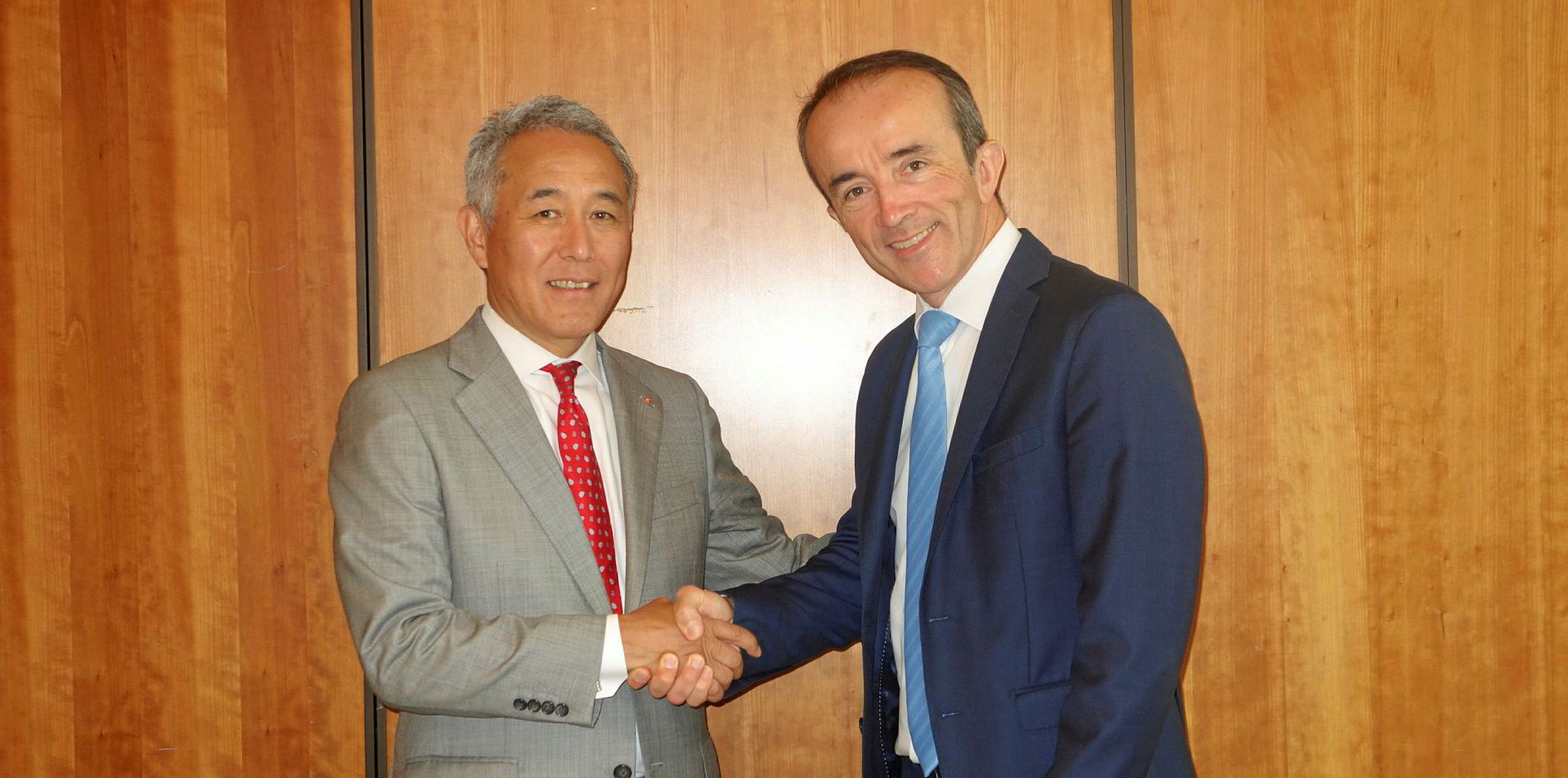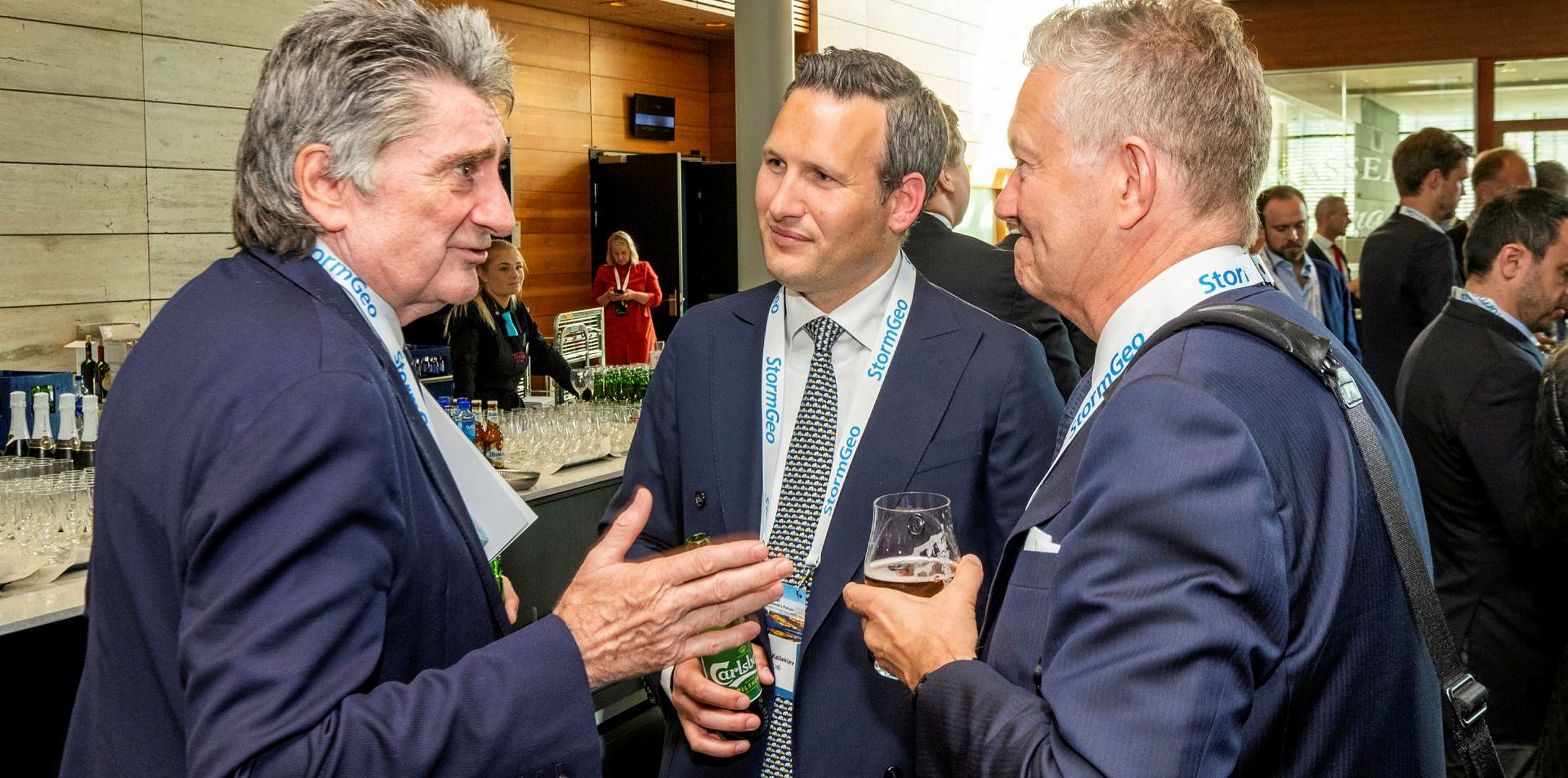K Line has signed up to fly an automated kite on at least one of its bulkers in a bid to reduce fuel consumption and greenhouse gas emissions by 20%.
The Japanese shipping giant sealed an agreement with French technology outfit Airseas to install the Seawing kite — based on parafoil technology — on a capesize or post-panamax vessel in November 2021 and service the system for 20 years, according to company executives.
“This is [our] first real attempt [at renewable energy],” Atsuo Asano, K Line’s senior managing executive officer, told TradeWinds on the sidelines of an event at Nor-Shipping. “Until now we didn’t have any real solution to reduce CO2 emissions.
“We agree to take proactive measures for the environment.”
Airseas chief executive Vincent Bernatets said the installation would only take two days while the training required for crew is limited.
The kite, attached to the ship by a 500-metre cable, will be able to fly 100 to 150 metres high. Capable of using airs flows from 80 out of the 360 degrees it is facing, Seawing is expected to be in use during 50% of the vessel’s operation time .
As for where the ship can be traded, Bernatets said: “The longer [route] the better … the route optimisation will reap most rewards [for the Seawing’s function].”
If the project goes well, Asano claimed K line may order up to 50 additional kites from Airseas.
The company is looking to install the technology on its bulkers because its traction force is more suitable for slow-speed vessels, Asano said, adding that containerships and car carriers may also be candidates at a later stage.
Both executives declined to comment on the cost.
“We can justify [the cost] as far as 20% saving is achieved,” Asano said.
Renewable energy for shipping
As the IMO has set emissions targets for 2030 and 2050, several shipping organisations have been researching into the use of renewable energy to power vessels.
In one of the recent cases, Hyundai Heavy Industries has designed an LNG-fuelled VLCC that will be fitted with Norsepower’s rotor sails for wind-assisted propulsion.
Bernatets claimed that the automated kite technology would be three to five times more efficient than rotor systems. He was also confident of the functionality of the Seawing, saying the chance of it falling into the waters would be “once in every 30 years”.
If that happened, he said: “The reaction is to cut the cable so the system drowns.”
He added that the technology can be adopted by vessels in merchant shipping, including tankers, bulkers and containerships, regardless of ship size.
Spun off from Airbus in October 2016 to focus on the maritime industry, Toulouse-based Airseas is majority owned by its management and minority owned by the European aerospace giant.
K Line is the second client for its kite technology. The company previously won a deal to install the Seawing on one of Airbus’ four ro-ro vessels in October 2020.
“We are at an industrial scale," Bernatets said, adding that Airseas may look at opportunities to team up with engine suppliers.
The company is constructing a plant in Nantes that will have production capacity of 15 to 20 kites per annum from 2021. In the same location, Airseas is planning a larger facility that can expand the capacity to 20 to 50 units per year.
Click here to keep up to date with TradeWinds' coverage of Nor-Shipping 2019.





